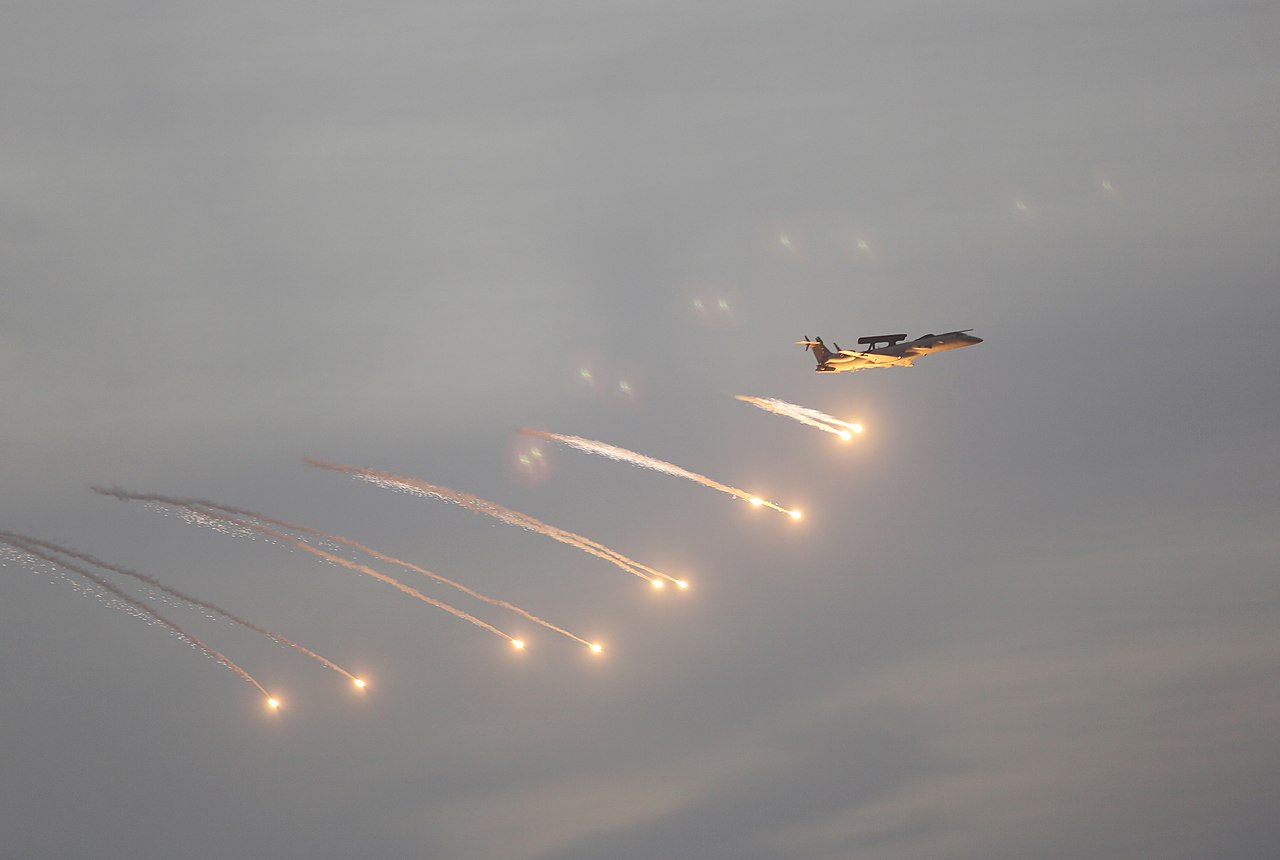The Indian Air Force (IAF) has been waiting for a long time to have more ‘Eyes in Sky.’ But the wait doesn’t seem to be getting over anytime soon as the Defense Research Development Organization (DRDO) has now decided to move from using wide-bodied Airbus A330 aircraft to using a narrow-body A321 aircraft as the platform for its Airborne Early Warning and Control System (AEW&C).
The move comes eight years after plans for indigenous AWE&C were set in motion.
This has been confirmed to journalists traveling to the Airbus facility in Getafe, Spain, where Airbus conducts the final assembly of its A330-based multirole tanker transport (MRTT).
The company’s Executive Vice President for military air systems, Jean-Brice Dumont, was quoted saying: “The Indian Govt has asked us if we can support them on single-aisle. World over, from the E-7 to the GlobalEye, it is clear that such systems are now on smaller platforms.”
Officials suggest that the new AEW&C needed to be an improvement over ‘PHALCON’ – the Russian Il-76-based AWACS already in service with India, especially regarding endurance.
“The majority of Netra’s systems, including the 240-degree AESA radar, were to be reused as part of a hybrid airborne early warning system. Integration of these systems with additional Air India A320-family planes would require lesser time. It will also be able to overcome the shortcomings of its earlier platforms – limited range and endurance,” an official familiar with the project told the EurAsian Times.
DRDO, the research and development organization of the Indian Ministry of Defense, has acquired six Airbus A321s from Air India. The A320 series are smaller single-aisle commercial jetliners and do not have a military derivative, unlike the A330, which is a larger twin-aisle commercial jetliner that is also available in a military variant as the A330 MRTT mid-air refueller.

DRDO will convert three of them into Netra (Eyes) MkII AEW&C jets. These will be improved versions of the home-grown AEW&C system fitted on Embraer ERJ 145 platforms that India procured from Brazil. Two aircraft will be modified for the SIGINT/COMINT role. One aircraft is named ‘Anusandhan’ (Experiment) by the DRDO and will be used for testing technologies and sensors.
The aircraft will be fitted with radars and sensors by the DRDO. Before that, the aircraft will be sent to France for refurbishment as per the IAF and the DRDO specifications. The whole project is expected to cost around Rs. 1.4 billion.
Flying Blind?
India has two nuclear-armed neighbors and adversarial relations with both of them. A vast landmass also calls for a greater number of AWACS to create a network-enabled and network-centric force.
The capability gap was felt during the Balakot airstrike in Pakistan’s territory in 2019 and the ensuing air battles with Pakistan Air Force fighter jets. Pakistan had taken advantage of IAF’s changeover of the ‘eye in the sky’ when launching the attack.
The ongoing tension with China on the Eastern Front has also reinforced the need for more AWACS.
Having a simmering border with China and Pakistan, the numbers of AEW&C with the IAF present a contrasting picture. The IAF continues to have a yawning gap with its adversary on the Western front Pakistan when it comes to AEW&C. India currently has only five platforms – IL-76-based PHALCON AWACS and two DRDO-developed AEW&C Netra aircraft. Experts estimate that the IAF needs at least ten such aircraft to man its airspace effectively.
The Pakistan Air Force has a fleet of 12 airborne early warning aircraft, including the Saab Erieye AEW&C and Chinese ZDK03 Karakoram Eagle AWACS, and can man the airspace round the clock.
China has been augmenting its capability at a feverish pace and is said to have over 20 AEW&C/AWACS platforms and also relies on high-end medium-altitude long-endurance (MALE) and high-altitude long endurance (HALE) drones for persistent ISR (Intelligence, Surveillance, and Reconnaissance) capability. In other words, India cannot cover the entire airspace.
AEW&C can carry out surveillance and reconnaissance. Apart from this, the AEW&C also acts as Command and Control for fighter jets in the air. They capture real-time information and can fuse them with ground-based command centers. The real-time communication and electronic intelligence inputs make them indispensable for offensive air operations and air defense.

The other advantage AEW&CS have is that it is a moving surveillance platform, making it difficult for the enemy’s anti-radiation missile to target. Its long range and detection capabilities give a 360-degree sky view and can track many aircraft simultaneously. During an offensive mission, the fighter jets will fly along with AWACS (sensor), reducing the time in sensor to shooter loop, as the offensive fighter (shooter) complement moves along with it.
The AWACS Timeline
The Phalcon AWACS were procured under a trilateral agreement between Russia, Israel, and India. The Israeli EL/W-2090 radar is mounted on the Russian IL-76 aircraft.
The IAF wanted to add AWACS to its inventory in 2016 and 2020, but high costs made it opt for the indigenous route. The DRDO-developed Netra was delivered six years late from its original timeline of 2011.
The development of an early warning system has suffered delays since its inception in 1994. The project was shelved following a fatal crash during testing. The IAF then went on to import three AWACS from Israel.
- Ritu Sharma has been a journalist for over a decade, writing on defense, foreign affairs, and nuclear technology.
- She can be reached at ritu.sharma (at) mail.com




